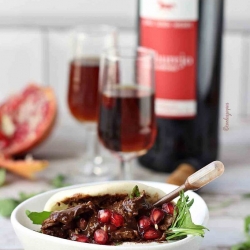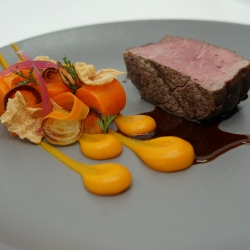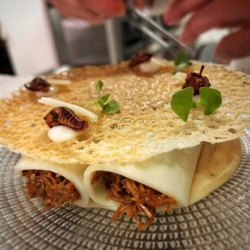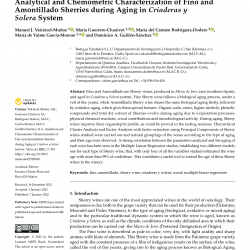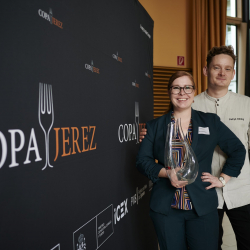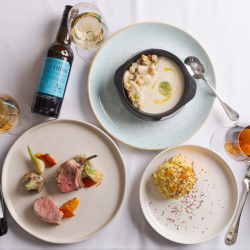Stewed ox cheek with creamy polenta & Oloroso Don Gonzalo VOS
Pair with Oloroso
Ingredients
Directions
Spice up the ox cheek with salt and pepper sear it in a pot from each side, remove from the pot and refrigerate. In the same pot sear the vegetables and the section of the ox cheek. Add tomatopaste and sugar, sear it until everything has a light brown color. Wipe out with good dry red wine only coverd, boil it down and repeat it 3 times again. now fill up with calf´s jus, apricotes and spices and let every thing for 20 minutes cooking. Now everything has to cool down. Now in a vacuum bag the ox cheek and a part of the sauce close everything and lay it in a water bath for 72 hours and 66°C.
After all separate the meat and the sauce. Boil down the sauce with rosmary and thym until you have an nice and creamy consistency refine it with olorosso don gonzalo.
Spice up the ox cheek with salt and pepper sear it in a pot from each side, remove from the pot and refrigerate. In the same pot sear the vegetables and the section of the ox cheek. Add tomatopaste and sugar, sear it until everything has a light brown color. Wipe out with good dry red wine only coverd, boil it down and repeat it 3 times again. now fill up with calf´s jus, apricotes and spices and let every thing for 20 minutes cooking. Now everything has to cool down. Now in a vacuum bag the ox cheek and a part of the sauce close everything and lay it in a water bath for 72 hours and 66°C.
After all separate the meat and the sauce. Boil down the sauce with rosmary and thym until you have an nice and creamy consistency refine it with olorosso don gonzalo.
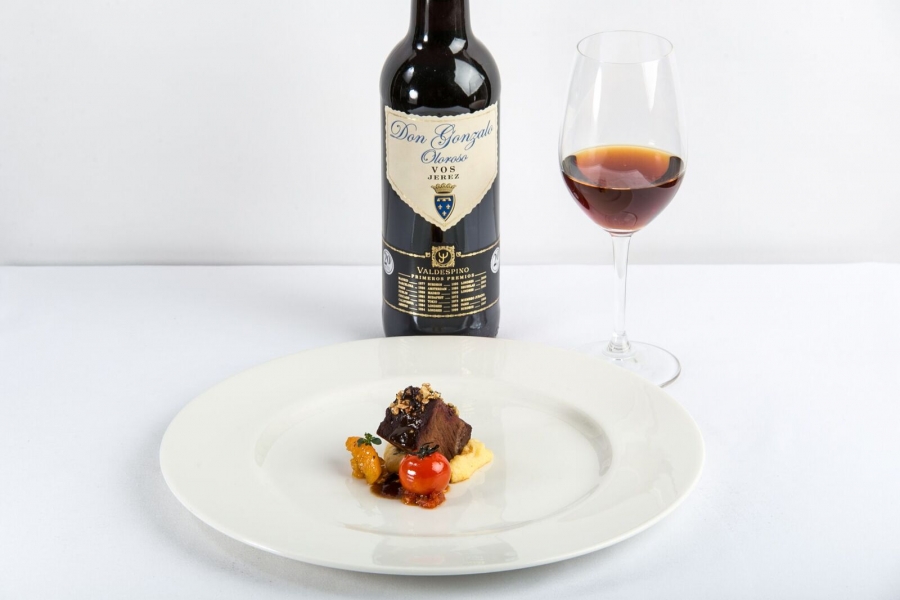

serving and consuming
Pairing Oloroso with food
The ideal temperature at which to serve an Oloroso is at between 12 and 14ºC.
This is the most suitable wine to accompany red meat and game. It combines perfectly with meat stews and casseroles; especially gelatinous meat such as bull's tail or cheeks. The perfect match for wild mushrooms and well cured cheeses.
Oloroso fast facts
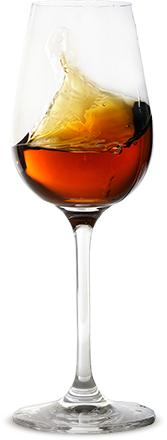
Analytic data
- Alcoholic content between 17 and 22% vol.
- Sugar < 5 gr. / litre
- Total Acidity (tartaric) 4 - 6 gr. / litre
- Volatile Acidity (acetic) < 0,8 gr. / litre
- High in Gylcerine Content 8 - 10 gr. / litre



